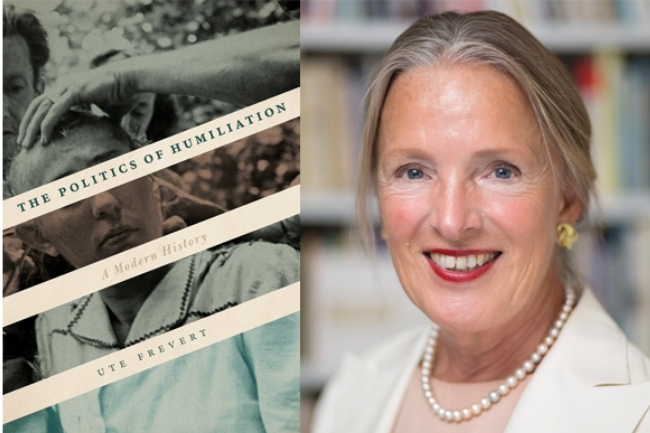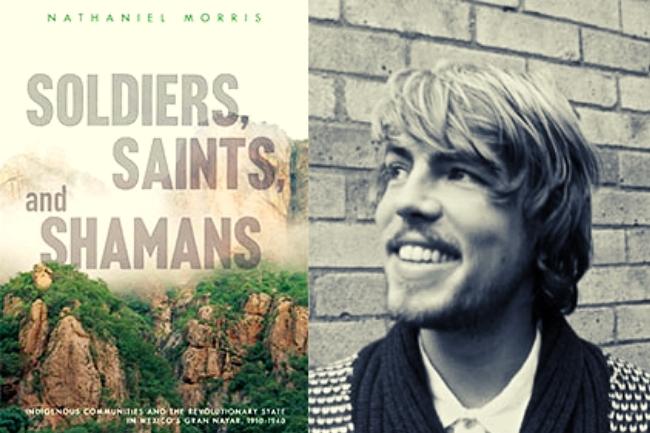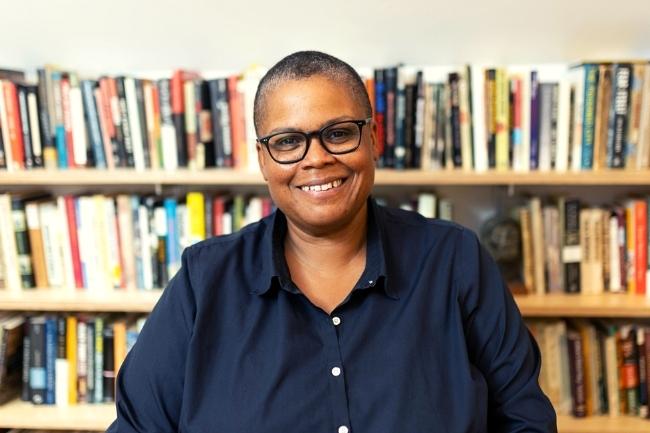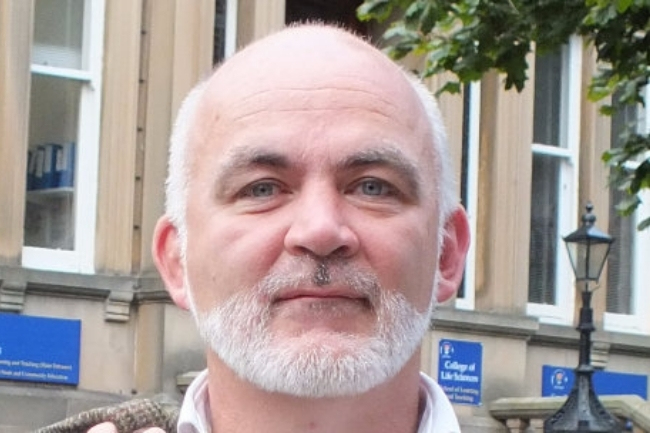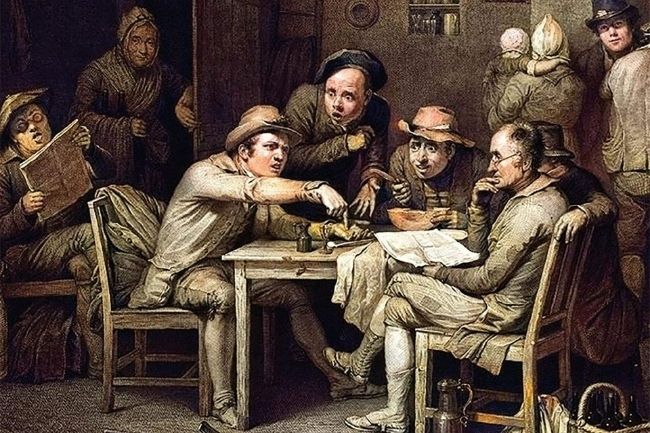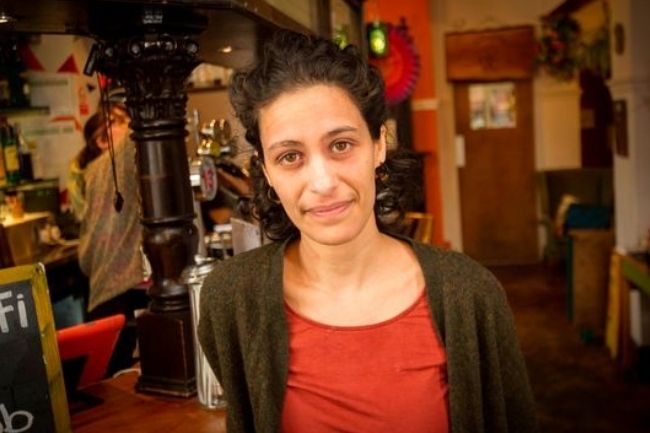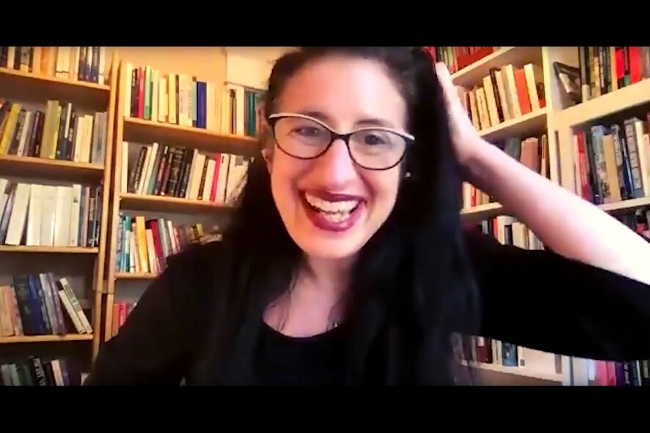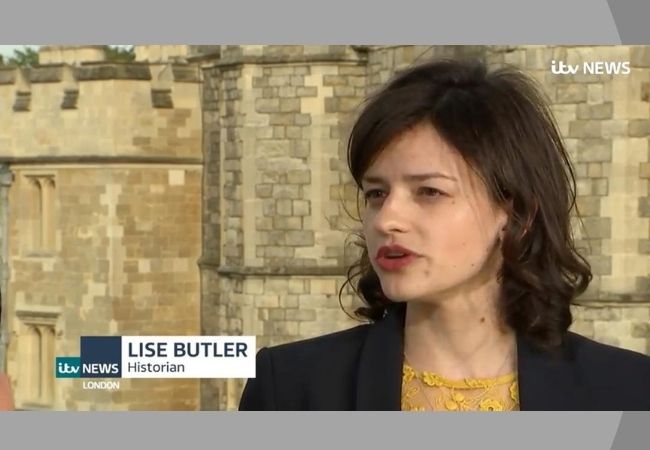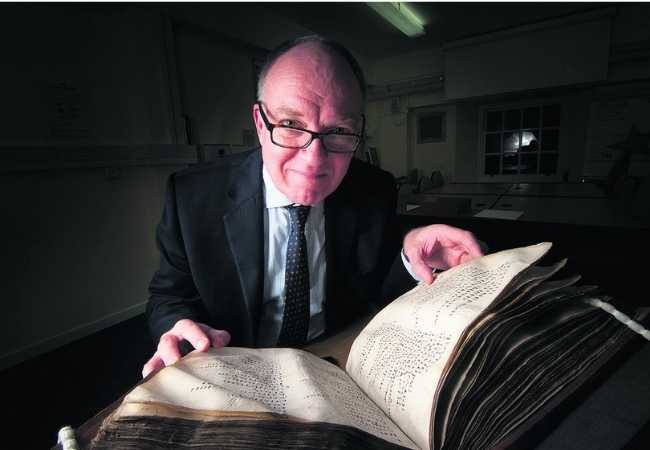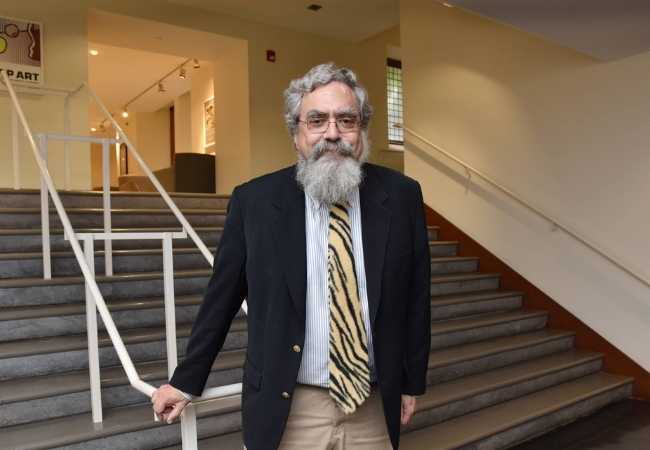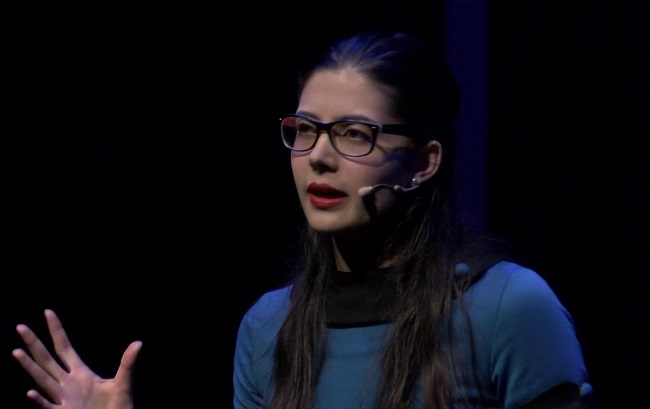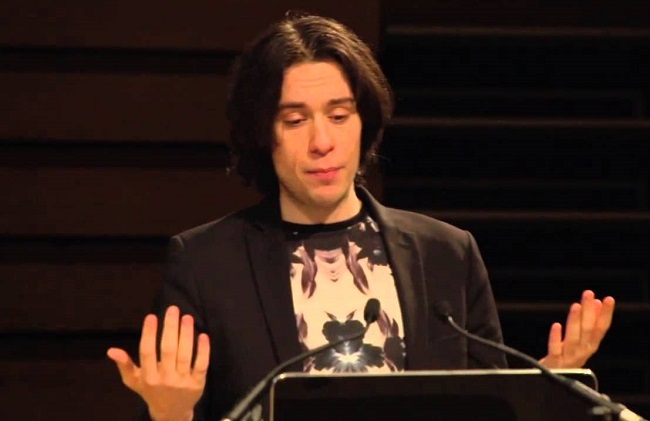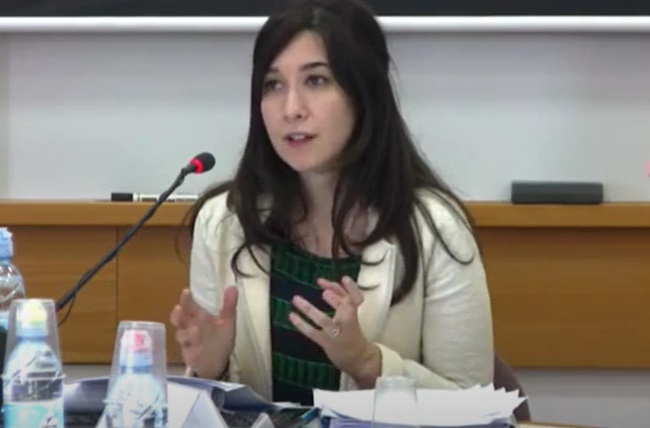Posts com a Tag ‘Reviews in History (RVH)’
Fugitive Pedagogy: Carter G. Woodson and the Art of Black Teaching | Jarvis R. Givens
Jarvis R. Givens | Imagens: The Black Teacher Archive
Born in 1865 during the last years of the American Civil War, Carter H. Barnett was a teacher and the principal of Frederick Douglass School in Huntington, West Virginia, where he edited the West Virginia Spokesman and contributed to the state’s Black teacher association. Positioned on the edge of a tattered 1896 photograph, he stands to the right of fifty-some school children assembled in motley garb on the school steps, Garnett’s own studious dress and the hat held in his hand testament to his status as Principal of this six-room school.
In 1900 Garnett was fired after he alienated local white leaders by proposing a series of Black candidates for political office who were independent from the local Republican Party. His replacement, the beneficiary of the persistent vulnerability of Black educators and—likely unbeknownst to the white school board—his cousin, was Carter G. Woodson, now well-known and indeed lionized as the ‘Father of Black History Month.’ Barnett’s story is a particularly resonant instance of the many under-examined stories unearthed in Jarvis Givens’s Fugitive Pedagogy: Carter G. Woodson and the Art of Black Teaching. Utilising Woodson as a centripetal focus, Givens unveils the full tapestry of Black education life, juxtaposing the fortunes and misfortunes of a realm “always in crisis; always teetering between strife and hope and prayer” (p. 22).
Givens, an assistant professor at the Harvard Graduate School of Education, maps this liminal position by excavating a pedagogical heritage of ‘fugitivity’, following the insights of theorists including Édouard Glissant, Saidiya Hartman, and Nathaniel Mackey. Invoking Mackey’s conception of the “fugitive spirit” of Black social life more broadly (p. vii), Fugitive Pedagogy describes the everyday acts of subversion Black teachers employed to teach students about Black history and heritage amid “persistent discursive and physical assaults.” (p 34). As Givens takes pains to emphasise, these acts were not isolated episodes but instead “the occasion, the main event”, representing the visible aspects of an “overarching set of political commitments” that dated to the period of enslavement and continued to be anchored in celebrations of the folk heroism of the fugitive slave (p. 16). The fugitive slave’s example symbolised a space of existence outside of prescribed racial orders, where African Americans could collectively assert their capacity to be educated, rational, and human. In the words of Master Hugh from The Narrative of the Life of Frederick Douglass, a slave who knew how to write was “running away with himself” (p. 12).
A great strength of this analytic, as opposed to resistance or freedom, is to emphasise that Black educational efforts were always fated to struggle against centuries of legislation and beliefs that denied Black educability. Incorporating Achille Mbembe’s Critique of Black Reason, Givens suggests that this “chattel principle” that rendered African-descended peoples fungible property to be exchanged by slaveholders denied their potential rationality, catalysing subsequent antiliteracy laws (p. 10). Slaves were to have “only hands, not heads”, hence the declaration of legislation following 1739’s Stono Rebellion that “the having of slaves taught to write, or suffering them to be employed in writing, may be attended with great inconveniences” (p. 11). Locating Black educators in the ‘Afterlives of Slavery’, Givens thus suggests that to be Black and educated has always represented “an insistence on Black living, even amid the perpetual threat of Black social death” (p. 10).
Fugitivity also voices the affective and embodied natures of teaching, where classrooms underwent “aesthetic transformation… to defy the normative protocols of the American School” (p. 204). For Givens, education is corporeal, embodied, and freighted with emotional resonance, its putative impossibility under dominant racial scripts “etched into Black flesh” (p. 20). Conversely, miseducation and antiblack curricular violence are situated as symbiotic with physical violence, hence the frequent quotation of Woodson’s assertion “there would be no lynching if it did not start in the schoolroom.” (pp. 95-96). Thematically, Givens thus emphasises Black education as a learning experience, something recovered by trawling a “patchwork of sources” from a diverse archive to privilege the often understudied experiences of Black students themselves and uncovering that common contradiction between “what they said or wrote” (p. 20).
Givens’s “collage of fugitive pedagogy” (p. 24) is constellated around the “particular, emblematic narrative” (p. 4) of Carter G. Woodson (1875-1950), the author, historian, and founder of the Association for the Study of African American Life and History (ASALH). As opposed to echoing Jacqueline Goggin and Pero Galgo Dagbovie’s accomplished biographies of Woodson, Fugitive Pedagogy analyses Woodson in constant relation to the ASALH’s broader network of scholars to demonstrate how Woodson “inherited a tradition and then played a crucial role in expanding it” (p. 16). (1) By effectively dethroning Woodson, this networked approach paints a more expansive portrait than the patrilineal tendency to centre the individual achievements of this ‘father’ of Black Studies.
For example, Givens’s first chapter provides a fresh perspective on the already well-examined subject of Woodson’s life from 1875-1912 by emphasising his socialization into a vibrant pre-existing “black educational world” (p. 26). This deliberately privileges Woodson the teacher over Woodson the later scholar, highlighting how reading newspapers to the Civil War veterans he worked alongside in West Virginia’s coal mines and witnessing his teachers, frequently themselves formerly enslaved men, allowed Woodson to develop “a studied perspective on the distinct vocational demands of being a black teacher” (p. 26). Taking Woodson as emblematic of the first post-emancipation school generation thus stresses the continuities in Black education’s striving against a pre and post-emancipation antiblack social order, revealing how teaching the formerly enslaved consequently remained “an act of unmaking the terms of their relation to the word and world” (p. 35).
Chapter Two highlights how Woodson’s desire to denaturalize prevailing forms of scientific judgement found an “institutional embodiment” in the ASALH, one instance of Woodson’s wider designs to form a Black “counterpublic” (p. 71). Whilst this is also well-trodden ground, the fugitive pedagogy motif nonetheless helps to explain the Association’s shift from the interracial historical alliance conceptualized in 1915 to its more polemic form in the 1930s. This was, Givens argues, a direct response to the epistemological violence of racist films such as Birth of the Nation and the physical violence of contemporary race riots such as 1919’s ‘Red Summer.’ In a position of eternal vigilance, the Association was thus portrayed “standing like the watchman on the wall, ever mindful of what calamities we have suffered from misinterpretation in the past and looking out with a scrutinizing eye for everything indicative of a similar attack” (p. 62).
Chapter Three moves to embed Woodson in a distinct tradition of Black educational thought, a literature of educational criticism that sought to counter the disfiguring of Black knowledge within American public life. As opposed to emphasising the barriers preventing access into American schools and universities, Givens instead underscores the “epistemological underpinnings of education provided to those who made it past these barriers” (p. 97). Thus, Woodson’s Mis-Education of the Negro (1933) critiqued the “imitation resulting in the enslavement of his mind”, particularly from institutions like Harvard which rendered its students “blind to the Negro” and unable to “serve the race efficiently” (pp. 98-99). In the most theoretically expansive section of Fugitive Pedagogy, Givens articulates this Woodsonian critique of pedagogical ‘mimicry’ to the adjacent conceptions of several extra-American Black thinkers regarding the disfiguring of Black knowledge: Aimé Césaire’s ‘thingification’, Sylvia Wynter’s ‘narrative condemnation’, and Ngũgĩ wa Thiong'o’s ‘cultural bomb.’
Chapter Four too ballasts fugitive pedagogy in the remembrance of the Black fugitive as an “an archetype who symbolized Black people’s political relationship to the modern world and its technologies of schooling” (p. 128). This archetype indicates the wider use of Black historical achievements as models for present political action within textbooks that sought to vindicate Black intellectual and political life by recalling the full history of resistance within the Black diaspora. In this sense, Givens concludes, the Black textbook was “itself a literary genre inaugurated by runaway slaves” (p. 158). This tradition rendered curricular violence visible, distilling the possibility of resistance by evoking a Black aesthetic that situated subversion and defiance as long-standing threads of Black existence.
Chapter Five looks to connect Woodson to a cadre of Black schoolteachers. Adapting the term “abroad marriages”, originally applied to those enslaved who married those living on different plantations, Givens shows how Woodson the ‘abroad mentor’ utilised the Black press, the ASALH, and particularly Negro History Week to translate his ideas to school teachers, pausing along the way to examine the inequity in school provision and the restrictions on teaching they faced, particularly in the South. One notable example was the Negro Manual and Training High School in Muskogee, Oklahoma. In 1925 its Principal Thomas W. Grissom was forced to resign after officials found Woodson’s The Negro in Our History being taught, with the school board decreeing that nothing could be “instilled in the schools that is either klan or antiklan” (p. 168).
Finally, Chapter Six looks to centre students as “partners in [the] performance of fugitive pedagogy” by analysing biographical materials recounting the school days of prominent civil rights activists, politicians, and scholars including Angela Davis, John Lewis, and John Bracey (p. 199). Whilst subsequent activists are likely to be far from representative, Givens effectively emphasises the aesthetic ecology of the classroom and how the value systems undergirding school routines, rules, and projects including Negro History Week “inducted [students] as neophytes in a continuum of consciousness” (p. 222). This collection of visual narratives, Givens argues, formed an ‘oppositional gaze’, a disposition to question social technologies that perpetuated antiblack violence. The example of Congressman John Lewis is particularly resonant, as Givens shows Lewis prefiguring his later contribution to the sit-in movement by asking a public library in Troy, Alabama for library cards for him, his siblings, and his cousins despite their full awareness of the futility of this request.
If Fugitive Pedagogy has one weakness, it is the underplaying of intraracial differences inevitable within Givens’s artifice. Whilst Givens stresses that fugitivity is a variable practice, he asserts that “surely there are deviations, but they are not the concern here” (p. 16). Correspondingly, Fugitive Pedagogy makes no attempt to comprehensively trace variations in region, class, and gender. In a book of just over 300 pages, this is a pragmatic decision which avoids diluting the argumentative thrust. Yet consequential statements of intraracial equality are on occasion made rather too briefly. For example, Givens looks to identify the ASALH as “an intellectual project with Black Americans across age, class, and gender in mind,” defining his inclusion of gender here as a “careful assertion” (p. 84). Granted, Givens effectively illustrates that Black women consistently made up more than three-quarters of the profession and rose to prominent positions, with Mary McLeod Bethune becoming the ASALH’s President from 1936 to 1951. Yet this is not to say that Black women’s contributions were adequately recognised or recompensed, particularly given Patrice Morton’s suggestion that the ASALH failed to challenge many myths of Black womanhood prior to the late 20th century.(2)
Second, further research is needed to layer fugitive pedagogy into the full scope of Black institutional life, investigating how fugitive pedagogy translated to ancillary sites of education, including clubs, sporting societies, libraries, and churches. Givens consciously distances his argument from quantitative assessments of the inequality of educational provision yet this risks obscuring regional variations in resources and the vital ties between low wages, economic precarity, and professional vulnerability. Fugitive Pedagogy largely develops ‘upwards’ from individual acts of fugitivity, occasionally de-emphasising the institutional context. This means that readers hear little about mundane but vital factors including roofs, heating, lighting, desks, school grounds, teacher-pupil ratios, or the disproportionate private ownership of Black schools. With the firings of both Grissom and Barnett, Givens correspondingly emphasises the outcome rather than the process, occluding the logics and justifications of school boards and the pressures placed upon them by local (white) communities. Should an adequate archive exist, an ecological study focused on fugitive pedagogy within a single school would particularly flesh out Givens’s framework.
Third, given the roots of fugitive pedagogy in the discrete experience and memories of slavery, could other insurgent pedagogies employ fugitive practices? If not, there is a risk that the fugitive model shifts a further emotive and educative burden to Black teachers, compounding the long-standing tendency already recognised by Givens for Black teachers to double tax themselves to achieve liberatory ends. Givens suggests so, situating Black fugitive pedagogy as one discrete tradition within a broader genre of educational criticism that critiqued orthodox models of schooling, a purposive attempt to “leave room to consider… bodies of educational criticism by Native American educators and thinkers, Marxist educators, and feminist teachers and thinkers, among others who understand their political motivations for teaching to be in direct tension with the protocols and dominant ideology of the American school” (p. 251, cf.76). Further, recounting recorded acts of fugitivity necessarily underplays the longer slog of merely existing and making a living within white institutions, with all the undoubtedly uneasy cross-racial cooperation and interest convergence this entailed. When reckoning with this subject matter, any historian is condemned to see only the tip of the iceberg, only those acts visible in the archive through exorbitant chance and, more than often than not, only when refracted through the institutional memory of surveillance institutions. Whilst Givens has collected a vast archive of Black voices, there remains the risk of privileging more palpable disobedience over the dissemblances and circumlocutions which could allow Black teachers “wearing the mask” to articulate an activist ethos within the confines of objectivity.
These three areas for further investigation notwithstanding, Fugitive Pedagogy ultimately offers an engrossing reminder of the importance of collective education that is particularly resonant in the world of individualised algorithmic learning that followed the COVID-19 pandemic. Ambitious and theoretically virtuosic in exposition, magnetic and energizing in execution, the clarity of its theoretical interventions suggests that its broad brushstrokes will be imminently nuanced by other scholars empowered by the fugitive framework and its relevance to current pedagogical debates.
As the February 2022 victory of a diverse coalition against Indiana’s House Bill 1134 signals a growing resistance to anti-CRT legislation, Givens is particularly commendable for his insistence on Black education’s prescriptive moral force. A more diluted ‘anti-racist’ pedagogy within contemporary education that often tends towards the personal and psychological, towards diversity and inclusion, is cut short shrift compared to a progressive pedagogy that acknowledges the structural determinants of white supremacy. For Givens, education provides an alternative prospectus for living. If this may appear somewhat utopian, Fugitive Pedagogy at least provides a powerful argument for cross-professional solidarity between academia and schoolteachers. This will undoubtedly be furthered by Givens’s creation (alongside Princeton’s Imani Perry) of the Black Teacher Archives. As Givens notes, this disposition represents “an international refusal of contemporary trends where teachers are deprofessionalized in general and where black teachers in particular have been systemically alienated, often being positioned as unintellectual and nonpedagogical knowers” (p. 239).
Excavating Black education’s persistent fugitive ethos also emphasises that the ‘political’ education challenged by recent anti-CRT laws has only been rendered visible and legislatively-eradicable in proportion to white discomfort. Historicizing this ethos thus provides a warning against retreating to political ‘neutrality’ as such an option has never existed. Ultimately, Fugitive Pedagogy suggests that any pedagogy seeking to advance Black achievement is necessarily ‘political’, if only because the mere social fact of Black literacy confounds the founding principles of the American Republic.
To be sure, teachers in the present United States face their own dilemmas. Contemporary educators face not only an onslaught of anti-CRT legislation but also the dilemmas of retaining any activist impulse behind Black education within a racial liberalism that stresses the integration of Black history into multi-racial educational programmes disarticulated from the Black counterpublic sphere. As Givens recently recognised in The Los Angeles Review of Books: “We must also recognize… that [the] siloed inclusion of Black knowledge into mainstream institutions- often in defanged fashion- can only do so much to disrupt the self-corrective nature of said systems.” (3)
Jarvis Givens’s Fugitive Pedagogy places educational strivings at the heart of the Black freedom struggle, providing historians of the United States a digestible testament to the methodological interventions and activist orientations of recent historians of Black education. Suitable for both advanced undergraduates and the public, Givens’s work deserves a central role in syllabuses on the Black freedom struggle, the sociology of knowledge, and broader histories of resistance to educational domination. As the global education sector rebuilds following COVID-19, Fugitive Pedagogy cogently conveys this literature’s overwhelming emphasis on the virtues of disciplinary self-introspection and recovering shared professional heritages. If much of the fugitive tradition with its attendant varieties remains to be fully pieced out, Givens nonetheless articulates a grammar for struggle that can provide refortification to our own generation’s embattled teachers who choose to think otherwise. Teetering once more between “strife and hope and prayer”, Fugitive Pedagogy articulates a language that provides historical ballast for the present and argumentative weapons for the future.
Thomas Cryer (he/him) is a first-year AHRC-funded PhD student at University College London’s Institute of the Americas, where he studies memory, race, and, nationhood in the late-20th-century United States through the lens of the life, scholarship, and activism of the historian John Hope Franklin. [Twitter: @ThomasOCryer]
Notes
1 Pero Gaglo Dagbovie, The Early Black History Movement, (Urbana: University of Illinois Press, 2007) & Jacqueline Anne Goggin, Carter G. Woodson: A Life in Black History, (Baton Rouge: Louisiana State University Press, 1993).Back to (1)
2 Patricia Morton, Disfigured Images: The Historical Assault on Afro-American Women, (New York: Greenwood Press, 1991).Back to (2)
3 Jarvis Givens, ‘Fugitive Pedagogy: The Longer Roots of Antiracist Teaching,’ The LA Review of Books, August 18th, 2021.Back to (3)
Resenhista
Thomas Cryer - University College London.
Referências desta Resenha
GIVENS, Jarvis R. Fugitive Pedagogy: Carter G. Woodson and the Art of Black Teaching. Cambridge, MA: Harvard University Press, 2021. Resenha de: CRYER, Thomas. Reviews in History. Londres, n. 2465, sep. 2022. Acessar publicação original [DR]
The Politics of Humiliation: A Modern History | Ute Frevert
Ute Frevert | Imagem: Prospect Magazine
In this informative book, Ute Frevert examines shame and shaming during the early modern and modern periods, mostly in Germany and Britain, but in other European countries as well. It is based upon her German book, Die Politik der Demütigung: Schauplätze von Macht und Ohnmacht, published in 2017.
One of this new book’s merits is the broad concept of shaming Frevert adopts, which includes not only blatant acts of humiliation such as dunce caps and pillories, but also interactions in which people are forced into demeaning or deferential behaviour. Frevert clearly believes that shaming (defined in this way) has been expressed and experienced universally, not as a result of cultural diffusion, but primarily as a result of basic processes of human interaction. Thus, it has persisted, despite social and normative changes in our world, and will continue in the future. Leia Mais
Soldiers, Saints, and Shamans: Indigenous Communities and the Revolutionary State in Mexico’s Gran Nayar, 1910–1940 | Nathaniel Morris
Nathaniel Morris | Imagem: The University of Arizona Press
The period 1910-40 was tumultuous in Mexican history. The armed phase of the Mexican Revolution (1910-20) was followed by fragmented attempts by Revolutionary politicians to assert Federal control and modernisation in the face of military rebellion, resistance to social reform, two major religious revolts known as the Cristiada, and ongoing, albeit often unremarked, agency from Mexico’s indigenous populations. This latter aspect is the focus of research in Nathaniel Morris’s excellent new history. The author’s specific attention is on the Wixárika, Naayari, O’dam, and Mexicanero communities of the Gran Nayar region along with adjoining locations along the Sierra Madre Occidental highlands.
Nathaniel Morris’s work is a landmark study of ethnohistory and a highly original addition to our knowledge of Mexico’s revolutionary and counter-revolutionary era of 1910-1940. His focus is the Gran Nayar, a region centred on Nayarit, but also including parts of the states of Sinaloa, Jalisco, Zacatecas, and Durango, during the armed phase of the Mexican revolution and the Cristero wars. Soldiers, Saints and Shamans fills a void in the historiography. As Morris correctly points out, there has been very little historical analysis of indigenous agency in the Mexican Revolutionary period, and ‘the Gran Nayar remains entirely absent from most Mexicans’ mental map of the period’ (p. 11). Throughout the 19th century, any Indian initiative was written off as a ‘caste war’, and irreconcilable with White and mestizo nation-building.(1) 20th-century historians and anthropologists mostly assumed that Mexico’s indigenous populations were either passive recipients of Revolutionary nation-building schemes or defiant outsiders from the mestizo state. A landmark study of caudillos (political/military ‘strongmen’) in the Independence Wars represented Indians as ‘apolitical’.(2)) Indigenous agency was usually explained as a defence of ‘old ways’, and the amorphous collection of rituals, everyday representations, and beliefs lumped together as a static rather than dynamic ‘costumbre’ (customs). Condescending, and even racist, interpretations died hard, as Nathaniel Morris’s separate study of the 19th-century Manuel Lozada revolt in a similar region has shown.(3) The outsized role played by indigenous communities in religious revolts, including the Cristiada, was explained as being motivated by religious devotion and an ingrained scepticism towards the Mexican state.(4) More recent scholarship has shifted the dial somewhat, demonstrating the considerable degree to which indigenous peoples collaborated with White/mestizo state-building all the same, often by turning against their defiant (‘bronco’) kin.(5) But Soldiers, Saints and Shamans should be considered a breakthrough. Leia Mais
Race for Profit: How Banks and the Real Estate Industry Undermined Black Homeownership | Keeanga-Yamahtta Taylor
Keeanga-Yamahtta Taylor | Imagem: KQED
In the context of a COVID-19 world, housing and living standard inequities are a phenomenon that have surely been exacerbated. The conditions created by global pandemic have undoubtedly contributed further to greater poverty in many areas—from housing, to jobs, to access to food security and water resources (informed by colonial legacies in North America especially). Any discussion of histories related to global or regional housing must be considered from this sort of lens. In this sense, the recent book Race for Profit: How Banks and the Real Estate Industry Undermined Black Homeownership, published not long before the pandemic began in 2020 offers prescient analysis.
In Race for Profit Keeanga-Yamahtta Taylor argues that “unprecedented public-private partnership in the production of low-income housing tethered the HUD [Department of Housing and Urban Development] and the FHA [Federal Housing Administration] to real estate brokers, mortgage bankers, and homebuilders” (p.4). The historiographical focus rests on a critique of the “declensional framing” of “urban crisis” through the late 1960s and 1970s, which Taylor suggests, “belies the dynamic and innovative methods of financing generated to develop the urban housing market” (p.5). As she forcefully argues:
[f]ar from being a static site of dilapidation and ruin, the urban core was becoming an attractive place of unparalleled opportunity, a new frontier of economic investment and extraction for the real estate and banking industries. The race for profit in the 1970s transformed decaying urban space into what one U.S. senator described as a ‘golden ghetto’ where profits for banks and real estate brokers were never ending, while shattered credit and ruined neighborhoods were all that remained for African Americans who lived there (p.4). Leia Mais
Migrant City: A New History of London | Panilos Panayi
Panilos Panayi | Imagem: Times Higher Education
According to a survey carried out by the National Federation of Fish Fryers in the 1960s, the first fish and chip shop was opened by Joseph Malins in 1860 on Old Ford Road in the East End of London (p. 234). The combination of the fried fish that had been sold and eaten in the Jewish East End since the early nineteenth century with chips created what became a quintessentially British meal. This is one of many examples included in Panikos Panayi’s Migrant City: A New History of London of how migrants have contributed to the culture and economy of London and in turn the United Kingdom.
Panayi makes clear the crucial role that migrants have played in the development of London as a global centre of trade, finance, culture, and politics. He ties this to London’s status as both the centre of a global empire and the largest city in the world for much of the nineteenth and twentieth centuries. More than half of migrants arriving in the United Kingdom from abroad moved to London, whose history of migration stretches back to its Roman founding. London, therefore, had long been cosmopolitan and by the late twentieth century had become ‘super-diverse’, with residents born in more than 179 countries, many beyond Europe or the former British Empire. Leia Mais
Blood Matters: Studies in European Literature and Thought/ 1400-1700 | Bonnie Lander Johnson e Eleanor Decamp
Sangue | Imagem: Classen Rafael / EyeEm/Getty Images/Superinteressante
This interdisciplinary collection of essays, emerging from a conference held at Oxford University and edited by scholars with interests in literature and medicine in early modern England, seeks to establish how the inhabitants of late medieval and early modern Western Europe defined blood, and to uncover how references to blood were deployed in descriptions of the human condition across various literary forms. The volume is divided into five thematic sections. As will be discussed later in this review, though, there are connections between essays in different parts of the volume, and around two-thirds of the contributors (11) hold positions in departments of English or Literary Studies, while a smaller number define themselves as cross-disciplinary scholars or reject disciplinary labels completely. Many authors focus on English-language texts produced in England, but several essays draw on evidence from other parts of Western Europe, or incorporate material from texts translated into English from other languages, particularly French, German, and Italian.
Section one, on circulation, begins with Margaret Healy critiquing the work of Christopher Hill, who argued that William Harvey ‘dethroned’ the heart in his writings after 1649 and afforded primacy to ‘democratic’ blood. Healy demonstrates that Harvey in fact emphasised the importance of both heart and blood throughout his career; that ideas about circulation as a beneficial phenomenon dated back to ancient Egypt and were promoted in the Renaissance by Hermetic and Platonic philosophers; and that circulation as a political concept featured in the writings of diverse philosophers, such as Thomas Hobbes, James Harrington, Gerrard Winstanley, and Daniel Defoe. Jumping back in time to Renaissance Italy, Heather Webb explores how the movement of blood and blood-based spirit through and out of the bodies of late medieval Christians was imagined in the writings of Dante and Catherine of Siena as a means of binding individuals into spiritual and social communities, while Katherine Craik uses evidence from 2 Henry IV and Henry V to demonstrate how characters in these plays reinforce and undermine differences of class, with notions that noble blood was more refined and precious being challenged by the ways in which the blood shed by different sorts of men was depicted intermingling on imagined battlefields. Leia Mais
Provincializing Global History: Money/Ideas/and Things in the Languedoc/ 1680-1830 | James Livesey
James Livesey | Imagem: University of Dundee
James Livesey’s Provincializing Global History: Money, Ideas, and Things in the Languedoc, 1680-1830 examines the ways significant knowledge shifts amongst ordinary men and women tied into, and helped create and solidify, deep economic change in the long eighteenth century. Part of making that argument for Livesey entails tying changes in culture in a specific place, here Languedoc, to broader economic development and transformation. The questions he lays out – how and why did the economic and industrial movements that originated in Western Europe come to capture and then dominate global economic activity and culture – are ones that many historians puzzle over in some fashion or another. For Livesey, answers lie in understanding the experiences of the subaltern, peasants and more generally ordinary folks in Languedoc, and the ways they connected to, understood and eventually participated in and transformed knowledge culture and economic development. He makes the argument that technological and scientific advances were not predicated solely, or even primarily, on inventions themselves and how effective they were. Rather a supportive local political environment, and the local adaptation of new technologies to the particular conditions of a place, made change possible. Livesey examines three examples of local transformation, connected to broader shifts, that connected the population of Languedoc to broad shifts in thought and practice developed and adopted elsewhere in order to trace how the provincial shaped and responded to global history. The three examples roughly correspond to the subtitle of the book – money (provincial debt holding), ideas (botany), and things (swing plow). Leia Mais
Political Thought in the French Wars of Religion | Sophie Nicholls
Sophie Nicholls | Imagem: University of Oxford
The book series ‘Ideas in Context’, published by Cambridge University Press since 1984, has played a major role in establishing the history of political thought as a prominent field of research and debate. Although the series’ roots lie in the so-called Cambridge school of intellectual history associated with J.G.A. Pocock, Quentin Skinner, and others, its volumes have always set out to break down any ‘artificial distinctions between the history of philosophy, of the various sciences, of society and politics, and of literature’.(1) It is perhaps surprising that until now no volumes in the series have focused on the political thought of the French Wars of Religion (c.1562-c.1598), a period known not only for confessional violence, dynastic crisis, and social rupture, but also for major controversies over questions of authority and resistance, liberty and rights, and other issues that are crucial to the study of early modern political thought.(2) Nevertheless, path-breaking studies of the political thought of Jean Bodin, François Hotman, and key figures in sixteenth-century French intellectual history published with Cambridge University Press by Julian Franklin, Ralph Giesey, and J.H. Salmon all preceded the series and perhaps helped to establish its terms.(3)
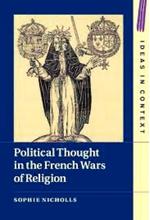
The Press and the People: Cheap Print and Society in Scotland/ 1500-1785 | Adam Fox
The Press and the People | Detalhe de capa
Early modern Scotland was awash with cheap print. Adam Fox, in the first dedicated study of the phenomenon in Scotland, gives readers some startling figures. Andro Hart, one of Edinburgh’s leading booksellers, died in 1622. In his possession, according to his inventory, were 42,300 unbound copies of English books printed on his own presses. John Wreittoun, also Edinburgh based, had in stock at his death in 1640 what Fox estimates to be 7,680 ‘waist littell scheittis of paper’, printed up as ‘littell pamphlettis and balladis’, and averaging a sale price of just 3d Scots (pp. 70-2). The inventory of Robert Drummond, drawn up, again in Edinburgh, in 1752, recorded a quantity of printed ‘small phamphlets’ and ‘ballads’ that Fox estimates amounted to 174,000 separate copies ready to go to market (p. 107). While historians of early modern print are well aware that the number of works we know about was once far surpassed by those now no longer extant, Fox’s examination of the inventories of Scotland’s printers and booksellers confirms the scale of the loss. It shows that Scottish printers were not predominantly producers of books and exposes a ‘vastly’ larger market for cheap print ‘than has ever been realised’ (p. 11). Leia Mais
Public Opinion in Early Modern Scotland/ c.1560–1707 | Karin Bowie
This is Karin Bowie’s second book about the history of public opinion in Scotland. Her first, in 2007, examined the period 1699-1707 in depth, covering the debate leading up to the Union of Parliaments.(1) The present book deals with a longer period, and has no single focus like the Union. Instead it discusses a larger range of political debates – and some religious debates, at least to the extent that these affected politics. Nevertheless, the questions driving the new book are similar. What was ‘public opinion‘, and how was it expressed? Or, what were people’s opinions, and how did they express them? The ‘public’ is never a singular thing that has a single opinion. Bowie’s book is thus about debate, and about processes of debate.
When historians discuss public opinion, what often interests us is the balance of opinion on debated topics. Was a given topic ‘popular’ or ‘unpopular’? Would a majority of the population have voted for or against (say) the Reformation at the time when it was being proposed? Historians of the early modern period cannot conduct opinion polls, but we recognise that the opinions that such polls would have measured did exist in some way. When we write of the ‘popularity’ of the Reformation, or indeed of its ‘unpopularity’, we are making statements that are to some extent psephological. Leia Mais
In the shadow of Enoch Powell: Race/ locality and resistance | Shirin Hirsch
Shirin Hirsch | Imagem: MEN
In the spring of 1968, Enoch Powell gave his infamous ‘Rivers of Blood’ speech (p 1). In the shadow of Enoch Powell: Race, locality and resistance explores its aftermath, successfully synthesising histories of Powell as a political figure, the local community of Wolverhampton, and, to a lesser extent, the nation.
The greatest strength of the book is its nuanced approach to this history. It adds complexity to our understanding of this period of British history by exploring the contradictory ambiguities present in daily lives. Hirsch writes that Powell’s populist racism was ‘challenged by the realities of work and changes within the trade union movement’ (p 92). Reflecting experiences of the racialised migrant communities of Wolverhampton, the book brings to light the interconnected histories of antiracism and of fear (p 112). Hirsch balances moments of racial tensions with moments of joy and solidarity throughout. She presents a positive history of Black people in Britain, a celebration of antiracist resistance, and an assertion that this is important British history. Leia Mais
The Crisis of the Meritocracy: Britain’s Transition to Mass Education since the Second World War | Peter Mandler
Peter Mandle | Imagem: Historical Association
Britain has never been a meritocracy. Despite the concept’s widely-evoked vision of a ‘fair’ or ‘just’ social order, one where individuals rise or fall according to their ‘talents’ or ‘efforts’, the rise of the meritocracy has continually been scuppered by the perseverance of inherited privilege or democratic pressure. In part, it is meritocracy’s unrealised status that keeps bringing the nation’s political leaders back to the concept, especially in recent decades. Confounded by growing levels of inequality, successive generations of politicians have sought solace in the popular enthusiasm for education as an arbiter of ‘earned’ social status and a marker of individual responsibility, talent and effort. The contemporary moment feels different, however. It is impossible to browse the shelves in a bookshop or visit a news website without stumbling across several volumes or articles decrying meritocracy’s impact on democracy, its role in the populist backlash of Brexit and Trump, or its collusion with the forces of neoliberalism.(1) Beyond the truism that the word ‘meritocracy’ was coined to describe a dystopia and yet has somehow become a positive vision of a ‘classless’ social hierarchy, these accounts all lack a sense of history. Therefore, Peter Mandler’s latest book, The Crisis of the Meritocracy: Britain’s Transition to Mass Education Since The Second World War, could not be more timely. Leia Mais
Four Nations Approaches to Modern ‘British’ History: A (Dis)united Kingdom | Naomi Lloyd-Jones e Margaret M. Scull
Naomi Lloyd-Jones | Imagem: Royal Historical Society
Four Nations Approaches, as the editors acknowledge from the start, follows in the footsteps of a very solid tradition of edited collections, brought about by the rise of ‘New British History’ in the 1990s and early 2000s. Unlike the majority of that scholarship, however, this volume focuses on the modern rather than the early modern period: the stated aim of this chronology is that it allows the historian to transcend the discussion of ‘state formation’ (p. 5, and see also p. 62). Hugh Kearney’s ‘four nations’ label is adopted here to highlight the fact that ‘the extent to which’ England, Scotland, Ireland, and Wales ‘shared a “British” history is interrogated, rather than assumed’ (p. 6), and the approach remains ‘pluralistic’ rather than ‘wholeistic’ (p. 5). ‘Interactions’, instead of ‘integration’, form the focus of analysis (p. 5).
On the whole, there are two dangers that the volume sets out to avoid: the Anglocentrism which is residual in J. G. A. Pocock’s work, and, almost inevitably, in many political and state-centred histories; and a backstaging of the differences and peculiarities of each nation in an effort to look at how they fit into a British ‘whole’. This backstaging usually leaves behind especially Wales, tacitly subsumed into England, and—as Krishan Kumar has most eloquently noted—England itself, whose supposed essence is often reduced to positional dominance in the Union and in the Empire.(1) In this historical moment, however, an explicitly dis-homogenising historiographical approach is made most relevant by the post-2016 trajectories not of Wales and England, but of Scotland and Northern Ireland (pp. 15-18). Lloyd-Jones and Scull are very aware of the risks of hindsight-thinking. That of coming to see the United Kingdom as less of a historical reality merely because of its present disgregation was an issue with which historians had to grapple already in the 1990s. (2) Yet in firmly choosing the Four Nations framework, and determinedly bypassing not only Anglocentric paradigms, but the very idea of ‘Britishness’, this book may well be riding an early wave of what will become the politically mainstream understanding of ‘British’ history. Leia Mais
Sex, Law, and Sovereignty in French Algeria, 1830–1930 | Judith Surkis
Judith Surkis | Foto: Brown University |
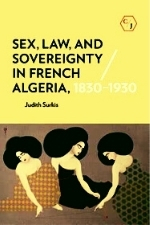
Masculinity and Danger on the Eighteenth-Century Grand Tour | Sarah Goldsmith (R)
Medieval Welsh Genealogy: An Introduction and Textual Study | Ben Guy (R)
This substantial book does two jobs. It undertakes the first full textual study of Welsh genealogical literature in the Middle Ages, and it provides a new critical edition of the most important texts. In the second of these roles it replaces Peter Bartrum’s Early Welsh Genealogical Tracts (1966), the workhorse on which everyone relied till now. In the first role, however, it has no predecessor. Bartrum offered only a modest commentary and apparatus. That cannot be said of Ben Guy’s book. The task of reviewing this imposing volume calls to mind a certain early Welsh poem in which an inferior warrior takes on the hero, like ‘a shrew that scrabbled against a cliffside.’
Readers may want to know what is so important about genealogy, and also why such basic source criticism is still needed in 2021. Genealogical thinking pervaded medieval Welsh views of the past and there was a dedicated literature of genealogy from a quite early date. There is plenty of material, therefore, and the general shortage of historical sources from early medieval Wales means that genealogies play an outsize role in the reconstruction of the country’s political history. As to why the texts were still in such a deplorable state of confusion, that is a consequence of an abundance of material combined with a shortage of investigators. Few historians have the time or inclination for this work. The astonishingly productive Peter Bartrum was an amateur scholar who worked in his professional life for the Meteorological Office. He has had few emulators, though the name of David Thornton deserves honourable mention, and other historians have dealt with individual problems. As a corpus, however, the earliest Welsh genealogical literature has never been reduced to textual order – until now. Leia Mais
Michael Young, Social Science & The British Left, 1945-1970 / Lise Butler
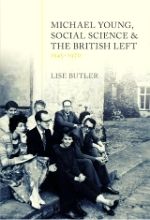
Burning the Books / Richard Ovenden, The lost library / Dan Rabinowitz
Richard Ovenden – Foto: Library of Congress /
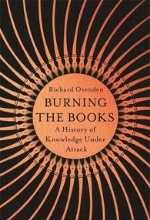
Burning the Books, which has justly garnered considerable critical and popular attention, eloquently and powerfully describes numerous attacks upon knowledge across four millennia, from the destruction of Ashurbanipal’s cuneiform library in 621 BCE to the ‘Windrush’ scandal of 2010 when Home Office officials were revealed to have destroyed records that would have proved migrants’ entitlement to British citizenship. While Burning the Books may not break new ground in the scholarship on libraries and book history—it largely draws upon existing literature—it is meticulously researched and referenced, compellingly argued, and likely to prove a landmark in the history of libraries and the preservation of knowledge.
Inky Fingers: The Making of Books in Early Modern Europe – Antony Grafton
Anthony Grafton / Foto: Princeton University /
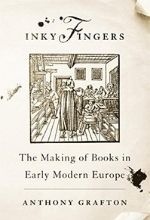
Utopian Universities / Jill Pellew e Miles Taylor
Milles Taylor. Foto: Telegraph India /
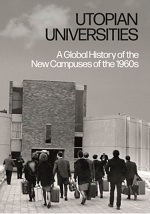
AI Narratives / Stephen Cave, Kanta Dihal e Sarah Dillon
Kanta Dihal / Foto: Media & Press /

The War of Words: The Language of British Elections / Luke Blaxill
Luke Blaxill / Foto: University of Birmingham /
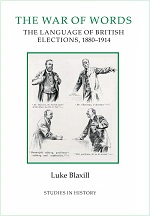
The War of Words has been trailed in a series of journal articles and book chapters over the last decade, so some readers will already be familiar with the techniques involved, and a number of the more striking reinterpretations the book offers. But having everything presented together—and supported by an imposing array of statistical tables (36) and figures (44), a ‘technical glossary’, and 68 pages of methodological and statistical appendices—lends the research a powerful cumulative effect. As this suggests, the volume’s embrace of digital methods goes well beyond the searches for ‘hits’ on particular keywords, and the Google Ngrams, which are already part of the historian’s armoury. What does the book mean to do? Leia Mais
Statelessness: A Modern History / Mira Siegelberg
Mira Siegelberg / Foto: TAUVOD /
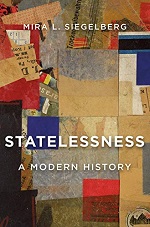
One way of telling the history of statelessness is to trace the origin of international agreements, notably the adoption by the United Nations General Assembly in 1954 of the Convention Relating to the Status of Stateless Persons in 1954, according to which a stateless person is anyone ‘who is not considered as a national by any State under the operation of its law’. Siegelberg does not dispute the importance of such a foundational moment—it forms part of her final chapter—but she insists upon the need for a non-teleological and more nuanced perspective, based upon a close reading of texts that emanated from multiple actors, including but not confined to a relatively small cast of international lawyers. These texts had consequences for the prospects of countless men and women. Statelessness thus becomes a touchstone for thinking about the relationship between the state, the international legal order, and the individual, and how that relationship was constantly reimagined. Leia Mais
Reviews in History | IHR UL | 1996
Reviews in History was launched in 1996, and publishes reviews and reappraisals of significant work in all fields of historical interest.
To date, we have published over 2200 reviews, reaching thousands of readers via the Internet and the free email alert. New reviews appear regularly.
The journal’s key features are:
- Longer reviews than usual (2000–3000 words)
- Free access to all reviews
- Free email alert with links to the latest reviews.
- Texts available to print / as PDFs
- Speed of publication
- Right of reply for authors and editors
- Reviews undertaken by leading scholars
- Broad scope – chronologically, geographically and thematically
- Valuable as a resource for researching, teaching and studying history at undergraduate and graduate levels
To contact us, send an email to either [email protected] or [email protected].
Have a read of our guidelines for reviewers and see our Creative Commons licence terms.
For the full history of Reviews, see the 2000 manifesto by David Cannadine and the original 1995 manifesto by Patrick O’Brien.
[Periodicidade semanal]
Acesso livre.
ISSN 1749-8155
Acessar resenhas
Acessar dossiês [A revista não publica dossiês]
Acessar sumários [A revista não publica sumários]
Acessar arquivos



